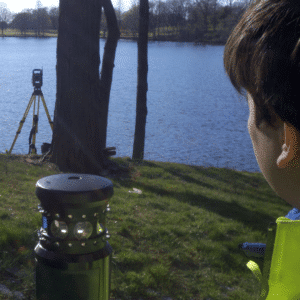“No rule can be laid down as to every situation, since … rights must depend in every instance upon the shape of the upland, the arm of the sea, and [the parties’] relative position to each other. The aim of all rules as applied to the rights of adjoining littoral proprietors on an irregular shore is to give each, as far as may be, a fair and reasonable opportunity of access to the channel.” Conway v Driscoll 476 So.2d 1306

“It is absolutely impossible to formulate a mathematical or geometrical rule that can be applied to all situations of this nature. The angles (direction) of side lines of lots bordering navigable waters are limited only by the number of points on a compass rose. Seldom, if ever, is the thread of a channel exactly or even approximately parallel to the shoreline of the mainland. These two conditions make the mathematical or geometrical certainty implicit in the rules recommended by the contesting parties literally impossible.” Hayes v Bowman 91 So.2d 746
“[N]o rule can be laid down as to every situation, since … rights must depend in every instance upon the shape of the upland, the arm of the sea, and their [the parties] relative position to each other. The aim of all rules as applied to the rights of adjoining littoral proprietors on an irregular shore is to give each, as far as may be, a fair and reasonable opportunity of access to the channel.” Gillilan v Knighton
Land surveyors play a crucial role in determining and allocating riparian rights among property owners bordering water bodies. In this article, we’ll delve into the various methods used to equitably divide riparian rights, ensuring that neighbors can enjoy their waterfront properties without the need for costly legal disputes.
Riparian Rights Allocation Methods
There are several common law methods for allocating riparian rights, each suited to specific scenarios. We’ll explore four of these methods in detail.

- The Round Lake Method: The round lake method is employed when dealing with circular or semi-circular water bodies. It divides the lake into wedge-shaped parcels, with each property owner entitled to a portion that widens at the waterfront boundary and narrows toward the center. This method ensures equitable distribution and is often used for round lakes and semi-circular lake formations.
- The Long Lake Method (Proportionate Thread of The Stream Method): The long lake method is ideal for elongated bodies of water, creating equitably-sized polygons between the center of the water body and the waterfront property boundaries. The choice between using the medial line or the thalweg as the dividing line depends on what yields a fairer distribution of riparian rights.
- The Colonial Method (Proportionate Shoreline Method): Similar to the long lake method, the colonial method measures angles from the waterfront property frontage rather than the medial line. It offers an alternative approach to allocate riparian rights fairly.
- The Proportionate Medial Line Method: This method calculates the ratio between the medial line length and waterfront frontage, ensuring each property owner receives a share proportional to their waterfront’s length. It’s a fair and equitable approach, especially in cases involving deep water bodies or lines of navigability.
- Prolongation of Property Lines Method: While the simplest method, the prolongation of property lines does not consider equity. It merely projects property lines into the water, often leading to disputes and overlaps. This method is generally discouraged in favor of more equitable approaches.
Understanding the Methodologies for Riparian Rights Allocation is Essential for Land Surveyors
It enables them to conduct surveys accurately and fairly, reducing the likelihood of costly legal battles among neighboring property owners. This article provides a foundational understanding, but further study is encouraged for those venturing into riparian surveys. Remember, “knowing is half the battle” when it comes to riparian rights allocation.

